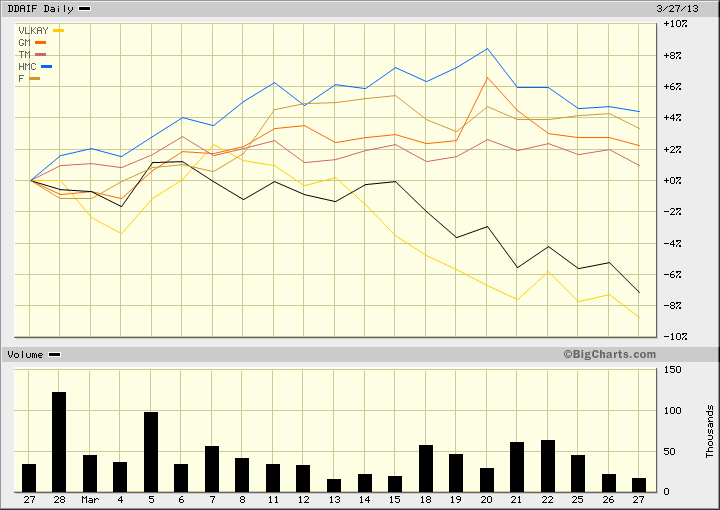Sorry!
I figured it’s best to get the apology out of the way up front. Because, inevitably, some readers are going to be offended by the fact that I’m talking about patents again. (See here, here, here, here, here, here and here.)
But patents really do matter that much.
Heck, without airtight patents, Apple (AAPL) wouldn’t have been able to revolutionize the world the way it did, since it’s likely the iPhone never would’ve happened.
So, like a good parent, I’m going to keep pounding it into your heads every chance I get – until every last one of you gets it.
I’m confident you’ll thank me for it later.
And here’s why, courtesy of the number crunchers at MDB Capital Group, Intellectual Asset Management (IAM) and Barron’s.
Do You Need Any More Proof?
MDB is the only investment bank on Wall Street that focuses exclusively on intellectual property (IP). And IAM is the publication of record for all things IP.
Recently, the two combined their expertise to develop a unique data set, the US Patent 100.
What does it do?
Essentially, it ranks and analyzes the largest U.S. patent holders.
And their research uncovered two important findings.
First, of the more than 140,000 unique U.S. patent holders, a mere 311 companies control over 50% of all U.S. patents.
Second, if we focus just on the US Patent 100, they control over 33% of all patents.
A quick extrapolation of this study – along with last year’s study from the United States Patent and Trademark Office (USPTO) and the Economic Statistics Administration – suggests that a handful of patent holders employs millions upon millions of people.
And, more importantly, they generate trillions of dollars in annual revenue (and profits).
Simply put, patents ultimately produce profits – and, in turn, boost share prices.
The takeaway for investors couldn’t be more straightforward. We should always strive to identify key patent holders early on. That way we can share in the profits as the market (eventually) realizes the value of each company’s IP.
Speaking of…
Is Wall Street Finally Catching On?
A recent article in Barron’s reveals that Wall Street might finally be figuring out the connection between patents and profits, too. (Better late than never, I guess.)
In “A Rewarding Development,” Jack Hough cites a “landmark study from Georgetown.” It found that companies that spend aggressively on research and development (R&D) enjoy fatter margins and higher stock prices, based on 50 years’ worth of data.
Hough concludes that investors should “watch for high-tech businesses with surging R&D spending.” By doing so, Hough adds, “They effectively buy into new products or services before they’re launched, or even announced, and long before Wall Street has built them into earnings forecasts.”
Close, Jack! But that’s not exactly the case.
You see, any company can aggressively spend money on R&D. But the simple expenditure doesn’t mean a breakthrough is going to materialize any time soon. If ever.
Heck, it could take several years – and millions of dollars – for R&D efforts to yield a new product or innovation.
In other words, high R&D spending doesn’t guarantee the development of anything valuable at all. It just guarantees that money is being spent.
On the other hand, patents and patent applications are proof positive that R&D spending has been fruitful. So it’s really by tracking patent filing activity – not merely R&D spending, as Hough suggests – that we can “buy into new products or services” long before the market realizes their ultimate value.
Bottom line: You can’t afford to ignore intellectual property any longer.
As MDB’s Chief IP Officer, Erin-Michael Gill, concludes, “Investors can use patent activity as a proxy for innovative activity” and to make “more informed investments.”
Indeed! And that’s exactly what I’ve been preaching and practicing since 2008, when I first started recommending patent-rich technology companies to WSD Insider subscribers. With admirable results, I might add.
We’ve locked in gains on IP-rich companies of 36%, 72%, 126%, 48%, 66%, 152%, 166% and 120%, just to name a few.
So if you’re looking to capitalize on the increasing relevance and value of patents in the market, I encourage you to sign up for a risk-free trial to WSD Insider.
For a limited time, we’re offering a 45-day, all-access pass to our research. Including our work on two companies that are the least-known – yet fastest-growing and technologically relevant – patent owners.
As I just told subscribers, they represent the “surest bets in the world” as the rest of Wall Street wakes up to the value of patents. Don’t miss out.
Ahead of the tape,
Louis Basenese
Article By WallStreetDaily.com
Original Article: One Dirty Investing Secret Wall Street is Clueless About


